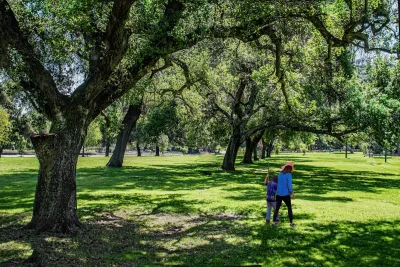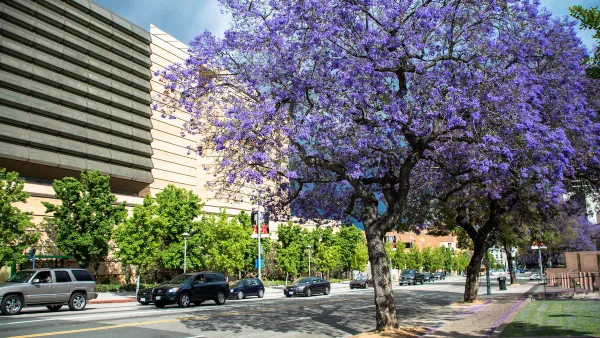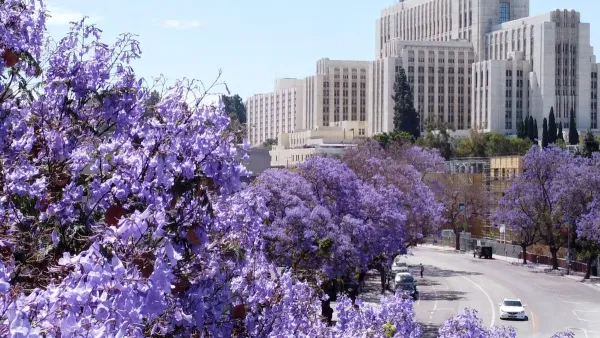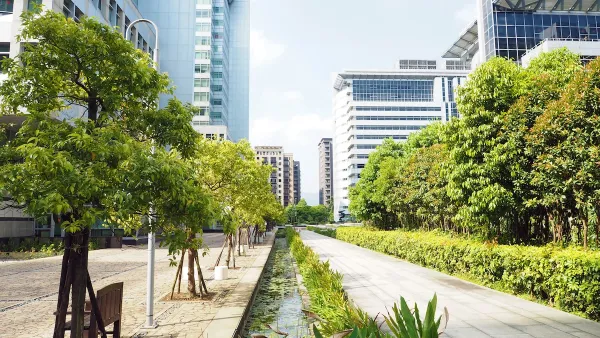Los Angeles County’s Community Forest Management Plan seeks to create a healthier, more equitable community forest by expanding tree coverage, engaging communities, and building resilience to climate impacts.

In an increasingly urbanized world, the role of nature within our communities has never been more important. The need to integrate trees and green spaces is essential not only for environmental sustainability but also for the health and well-being of residents. Community forestry, the practice of involving local communities in the management and care of community forests, stands as a key strategy to address these needs. By fostering a close relationship between people and their natural surroundings, community forestry ensures that the many benefits of trees are recognized, valued, and preserved for future generations.
The Los Angeles County Community Forest Management Plan (CFMP) was developed to address gaps in tree coverage and expand the benefits of trees to underserved communities. Through collaboration with key departments like Parks and Recreation, Public Health, and Public Works, as well as community-based organizations and residents, the CFMP aims to increase tree canopy coverage, focusing on areas that lack parks and green spaces. The Plan also addresses emerging threats, such as climate change and invasive pests, by implementing science-based practices and prioritizing community engagement to ensure a sustainable, inclusive approach to tree management and expansion.
The CFMP seeks to create a more equitable community forest through initiatives like increasing tree canopy in vulnerable areas, enhancing tree health and longevity, fostering community engagement, and preparing the community forest to adapt to climate challenges. By involving residents in all aspects of community forestry, L.A. County is building a foundation for long-term support and resilience. This forward-thinking plan not only benefits current residents but also paves the way for a healthier and greener future, particularly in communities historically impacted by environmental injustices.
FULL STORY: Trees for All

National Parks Layoffs Will Cause Communities to Lose Billions
Thousands of essential park workers were laid off this week, just before the busy spring break season.

Retro-silient?: America’s First “Eco-burb,” The Woodlands Turns 50
A master-planned community north of Houston offers lessons on green infrastructure and resilient design, but falls short of its founder’s lofty affordability and walkability goals.

Delivering for America Plan Will Downgrade Mail Service in at Least 49.5 Percent of Zip Codes
Republican and Democrat lawmakers criticize the plan for its disproportionate negative impact on rural communities.

Test News Post 1
This is a summary

Test News Headline 46
Test for the image on the front page.

Balancing Bombs and Butterflies: How the National Guard Protects a Rare Species
The National Guard at Fort Indiantown Gap uses GIS technology and land management strategies to balance military training with conservation efforts, ensuring the survival of the rare eastern regal fritillary butterfly.
Urban Design for Planners 1: Software Tools
This six-course series explores essential urban design concepts using open source software and equips planners with the tools they need to participate fully in the urban design process.
Planning for Universal Design
Learn the tools for implementing Universal Design in planning regulations.
EMC Planning Group, Inc.
Planetizen
Planetizen
Mpact (formerly Rail~Volution)
Great Falls Development Authority, Inc.
HUDs Office of Policy Development and Research
NYU Wagner Graduate School of Public Service





























